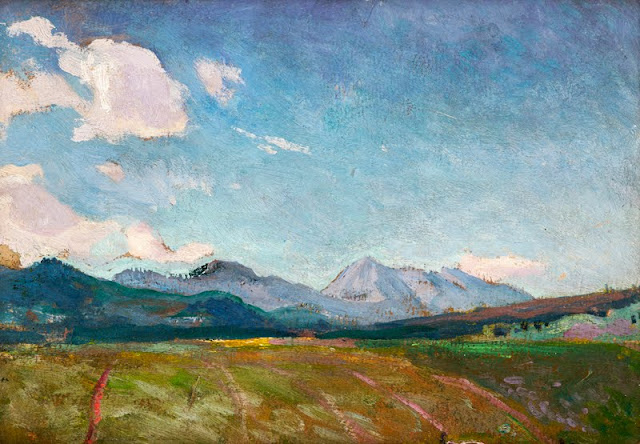
ALBERT BIERSTADT (1830-1902)
Mount Adams or Patho or Klikitat (3, 473m - 12, 281ft)
United States of America (Washington State)
In Mount Adams , 1875, oil on canvas, Princeton University Art Museum, USA
The mountain
Mount Adams or Patho or Klikitat (3, 473m - 12, 281ft) is a potentially active stratovolcano in the Cascade Range, USA. Although Adams has not erupted in more than 1,000 years, it is not considered extinct. It is the second-highest mountain in the U.S. state of Washington, after Mount Rainier/Tacoma. Mount Adams is a member of the Cascade Volcanic Arc, and is one of the arc's largest volcanoes, located in a remote wilderness approximately 34 miles (55 km) east of Mount St. Helens. The Mount Adams Wilderness consists of the upper and western part of the volcano's cone. The eastern side of the mountain is designated as part of the territory of the Yakama Nation.
Adams' asymmetrical and broad body rises 1.5 miles (2.4 km) above the Cascade crest. Its nearly flat summit was formed as a result of cone-building eruptions from separated vents. A false summit, Pikers Peak, rises 11,657 feet (3,553 m) on the south side of the nearly half-mile (800 m) wide summit area. The true summit is about 600 feet (180 m) higher on the gently sloping north side. A small lava and scoria cone marks the highest point. Suksdorf Ridge is a long buttress descending from the false summit down to an elevation of 8,000 feet (2,000 m). This structure was built by repeated lava flows in the late Pleistocene.
Air travelers flying the busy routes above the area sometimes confuse Mount Adams with nearby Mount Rainier/Tacoma, which has a similar flat-topped shape.
The Pacific Crest Trail traverses the western flank of the mountain.
In the early 21st century, glaciers cover a total of 2.5% of Adams' surface. During the last ice age about 90% of the mountain was glaciated. Mount Adams has 209 perennial snow and ice features and 12 officially named glaciers : Adams Glacier, Pinnacle Glacier, White Salmon Glacier, Avalanche Glacier, Mazama Glacier, Klickitat Glacier, Rusk Glacier, Wilson Glacier, Gotchen Glacier, Crescent Glacier and Lava Glacier.The Painter
Albert Bierstadt was a German-born American painter.At an early age Bierstadt developed a taste for art and made clever crayon sketches in his youth. In 1851, he began to paint in oils. He became part of the Hudson River School in New York, an informal group of like-minded painters who started painting along this scenic river. Their style was based on carefully detailed paintings with romantic, almost glowing lighting, sometimes called Luminism. An important interpreter of the western landscape, Bierstadt, along with Thomas Moran, is also grouped with the Rocky Mountain School.
In 1858 he exhibited a large painting of a Swiss landscape at the National Academy of Design, which gained him positive critical reception and honorary membership in the Academy. At this time Bierstadt began painting scenes in New England and upstate New York, including in the Hudson River valley. A group of artists known as the Hudson River School portrayed its majestic landscapes and craggy areas, as well as the light affected by the changing waters.
In 1859, Bierstadt traveled westward in the company of Frederick W. Lander, a land surveyor for the U.S. government, to see those landscapes. He continued to visit the American West throughout his career....
- More on Albert Bierstadt 's life and works





























